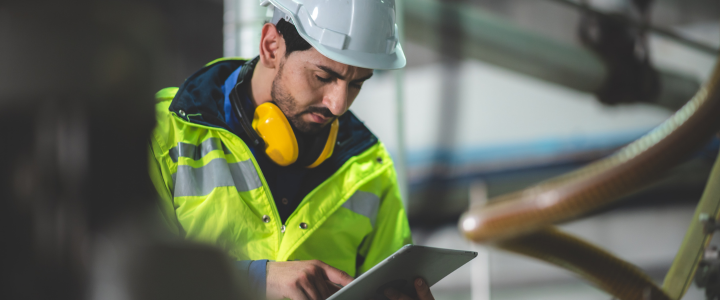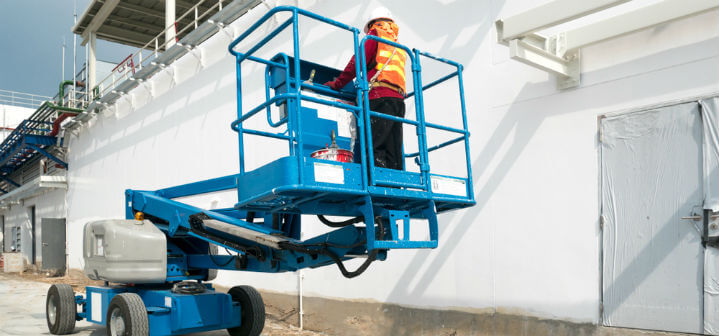Per OSHA regulations, it is mandatory for every piece of heavy construction equipment to undergo inspection before use. If any safety features are compromised, the equipment should not be used. Therefore, employers are responsible for conducting regular equipment inspections and making repairs to ensure the safety of their workers.
Why Do Regular Equipment Inspections Matter?
Regular equipment inspections are the backbone of a safe and efficient construction site. Beyond routine maintenance, these inspections play a huge role in ensuring compliance with safety standards, preventing unexpected breakdowns, and protecting the well-being of the workforce.
1. You Ensure Workplace Safety and Compliance.
Checking our equipment regularly is a must for a safe and rule-following workplace. When we carefully look at our equipment, we make sure it follows safety rules. Following regulations isn’t just a box to check off; it’s a promise to create a workplace that values industrial safety and responsibility.
2. You Prevent Equipment Failures and Breakdowns.
When we check our equipment regularly, we find and fix problems early on. This helps prevent sudden breakdowns and keeps everything running smoothly. It also makes our machines last longer, work better, and reduces the chances of unexpected downtime in our work.
3. You Minimize the Risk of Accidents and Injuries.
And these regular checks aren’t just about keeping the machines in good shape. They’re about keeping our team safe. By making these checks a priority, we reduce the chance of accidents and injuries, making our job site a secure and protected environment.
What to Include in an Equipment Inspection Checklist
An equipment inspection checklist is a structured document used to systematically assess the condition, safety, and functionality of various types of equipment. It’s a tool employed by professionals (often operators or designated inspectors) to ensure that equipment is in proper working order and complies with safety standards.
The specific items on the checklist may vary depending on the type of equipment and industry regulations, but here is a general guide:
- Date and Time: Specify when the inspection is carried out. This is essential for tracking how often inspections occur and ensuring they are done on the required days.
- Inspector: Clearly state who is inspecting the equipment. This is important because the inspector needs to be qualified for the specific heavy equipment being inspected.
- Equipment: Identify the piece of equipment under inspection, breaking it down by equipment type for a better understanding of inspection needs and performance review.
- Checklist Items: List the main inspection points and whether they pass or need repair. This is the core of the document, detailing the condition of critical components.
- Signoff: Include an approval section that indicates whether the equipment is safe for work or if corrective actions are necessary.
- Corrective Actions: Note if maintenance was done or if further actions were required for the equipment to pass inspection. This is where you would put any needed repairs or improvements.
This straightforward checklist ensures that inspections are done by qualified personnel, on time, with clear documentation of the equipment’s condition and any required actions. Overall, it’s a practical tool for maintaining construction safety and compliance on the worksite.

Types of Construction Equipment That Should Be Inspected Regularly
A construction equipment inspection checklist should include various types of equipment commonly found on job sites. Of course, the specific items may vary based on the type of construction work being performed and the machinery involved. However, a general construction equipment inspection checklist may include the following types of equipment:
Excavators
- Check hydraulic systems for leaks.
- Inspect bucket and teeth for wear.
- Test controls for proper operation.
Backhoes
- Check the condition of the digging bucket.
- Inspect stabilizers for proper function.
- Test the swing and boom controls.
Read now: Backhoe Operator Safety Tips
Bulldozers
- Inspect the blade for wear and damage.
- Check the undercarriage for loose or damaged components.
- Test steering and braking systems.
Loaders
- Inspect the bucket for wear and damage.
- Check hydraulic systems for leaks.
- Test controls for proper operation.
Cranes
- Check wire ropes for wear and proper tension.
- Inspect hooks and lifting attachments.
- Test load and boom controls.
Learn more crane safety tips
Concrete Mixers
- Inspect the drum for wear and cleanliness.
- Check the hydraulic system for leaks.
- Test controls for proper operation.
Aerial Lifts (Boom Lifts, Scissor Lifts)
- Inspect the lift platform and guardrails.
- Check hydraulic systems for leaks.
- Test controls and emergency lowering systems.
Compactors
- Inspect the compaction drum for wear and damage.
- Check the engine and hydraulic systems.
- Test controls for proper operation.
Forklifts
- Inspect forks for wear and damage.
- Check the lifting mechanism for leaks.
- Test steering and braking systems.
Discover forklift operator training by Safety By Design
Pavers
- Inspect the screed and augers for wear.
- Check the hopper for proper feeding.
- Test paving controls.
Generators
- Check the fuel and exhaust systems.
- Inspect electrical connections and wiring.
- Test start and stop controls.
Air Compressors
- Inspect air tanks and hoses.
- Check the compressor pump and motor.
- Test pressure controls.
See OSHA Standard 1926.1412 for more information.
Remember that this list is not the be-all and end-all. Your checklist should be tailored to the equipment present on the job site and comply with relevant safety regulations and manufacturer recommendations.

Discover Safety By Design’s Expert Inspection Services in Houston, Texas
Safety By Design is here to empower your commitment to safety since 2009! Our expert safety inspection services go beyond compliance, offering a meticulous evaluation of your equipment and workplace practices. With a focus on precision and attention to detail, our equipment inspections provide actionable insights to enhance safety protocols and prevent potential hazards. Prioritize the well-being of your team and the success of your projects today by partnering with a trusted safety consulting company.
Contact us today to get in touch with a safety specialist.
| Thank you for visiting our website! We appreciate your interest in workplace safety. Please note that Safety by Design is not affiliated with OSHA. However, we can assist you with the following OSHA-related services: • OSHA Mock Inspection • OSHA Training • Facilitate OSHA Inspections and Citations If you need to file a complaint with OSHA, please call 800-321-6742 (OSHA) or visit this page for other methods to contact them. |




